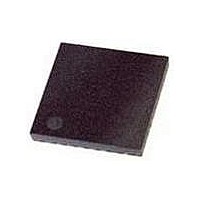5171N32-U THAT Corporation, 5171N32-U Datasheet - Page 17

5171N32-U
Manufacturer Part Number
5171N32-U
Description
Microphone Preamplifiers High-Perform Digital Pre-Amp Controller
Manufacturer
THAT Corporation
Datasheet
1.5171N32-U.pdf
(20 pages)
Specifications of 5171N32-U
Minimum Operating Temperature
- 40 C
Mounting Style
SMD/SMT
Operating Supply Voltage
3 V to 17 V
Operating Temperature Range
- 40 C to + 85 C
Supply Current
8.3 mA
Supply Voltage (max)
17 V
Supply Voltage (min)
3 V
Thd Plus Noise
0.0003 %
Available Set Gain
13.6 dB to 68.6 dB
Input Offset Voltage
+/- 1.5 mV
Maximum Operating Temperature
+ 85 C
Package / Case
QFN-32
Lead Free Status / RoHS Status
Lead free / RoHS Compliant
THAT5171 High-Performance
Digital Preamplifier Controller IC
by-side, with pins 1 through 4 on the 1570 facing
pins 1 through 7 on the 5171. See Figure 15 for a
suggested layout.
tance on the Rg pins, and to ensure that power sup-
ply lines do not run close and/or parallel to either the
input signal lines or the traces and pins connected to
the Rg pins. For current feedback amplifiers such as
the 1570, stray capacitance to ground or power
planes results in higher gains at high frequencies. As
a result, mismatches in the capacitance on these two
nodes will degrade common-mode performance at
high frequencies.
carry non-linear (e.g., half-wave rectified) versions of
the signal can magnetically and capacitively couple
into the input and Rg lines. This can create
distortion, particularly at high gains.
Figure 15. Recommended THAT1570/THAT5171 PCB
The 5171 and 1570 are intended to lay out side-
Designers should take care to minimize capaci-
Additionally, power supply lines, which often
Layout (mounted on same-side of PCB).
THAT1570
Tel: +1 508 478 9200; Fax: +1 508 478 0990; Web: www.thatcorp.com
THAT Corporation; 45 Sumner Street; Milford, MA 01757-1656; USA
THAT5171
Copyright © 2010, THAT Corporation; All rights reserved.
PCB Layout Information
Page 17 of 20
plane under the IN
traces. We also recommend a symmetrical PCB lay-
out to match the capacitance on these nodes.
mend that the metal “slug” on the bottom of the QFN
package be soldered to provide physical attachment
and improve thermal performance. The QFN's ther-
mal resistance with the slug soldered to the PCB is
not yet determined, but will be lower than the unsol-
dered resistance of 90º C/W. The slug may be left un-
connected electrically, or connected to V
lowing advice offered by Henry W. Ott in his recent
book Electromagnetic Compatibility Engineering,
published in August 2009 by Wiley (ISBN: 978-0-
470-18930-6). In it, Mr. Ott recommends laying out
the digital and analog ground scheme using ground
planes as if they were separate planes, but do not
actually separate them in the final design. As noted
earlier, all bypass capacitors should be located very
close to their respective power and ground pins. In
particular, for the digital supplies, C15 should con-
nect close to pins 20 and 21, with a short, low-
inductance path running from pin 21 to pin 13, and
another one from pin 12 to 20.
stration circuit board for the 5171/1570 part pair,
available from THAT.
course useful to designers, the layout and schematic
are published in the data sheet which covers the
board, and is available for downloading from THAT’s
web site.
Therefore, THAT recommends avoiding ground
As is customary with QFN packages, we recom-
When laying out the board, we recommend fol-
A useful reference for PCB layout is the demon-
1
and IN
While the board itself is of
Document 600133 Rev 04
2
pins and associated
EE
.














